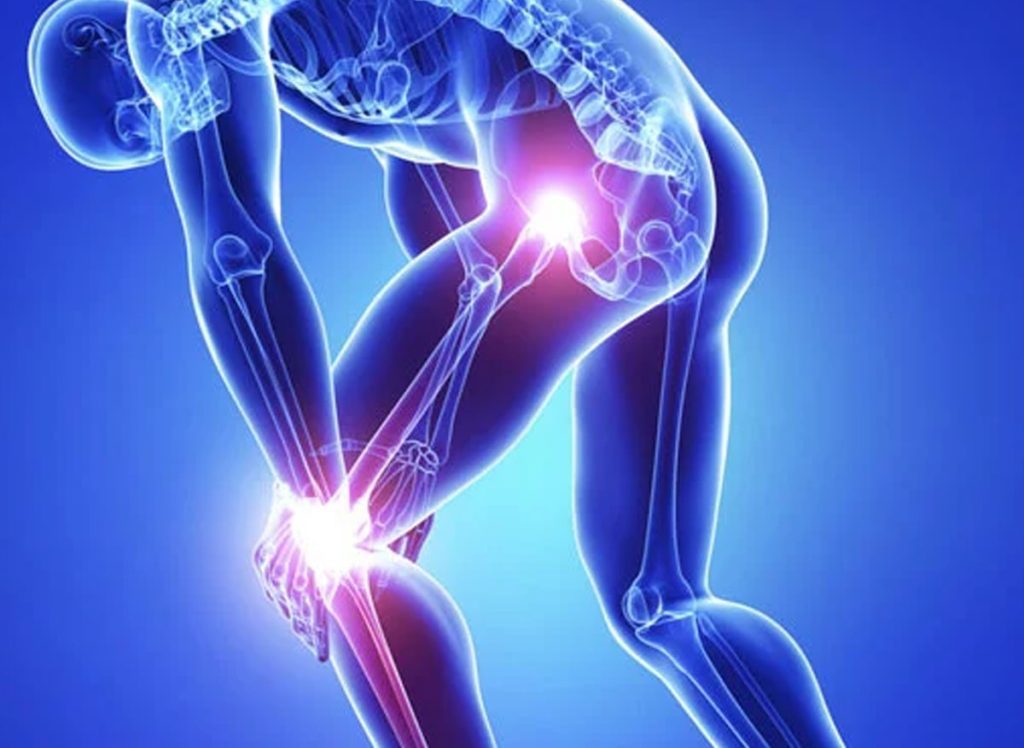What are joint disorders?
From a horrendous leg crack to slowly demolishing joint pain of the hands, messes influencing the bones and joints come in many structures. Without appropriate therapy, bone and joint conditions can prompt ongoing agony and inability.
Solid joints, for example, wrists, shoulders, knees, lower legs and finger joints permit your body to move easily. Bones like the femur (thighbone) and humerus (upper arm) likewise add to development.
Bones have a few other imperative capacities, too. They safeguard your organs, similar to your skull protecting the cerebrum. Bone marrow produces platelets. Bones give capacity to minerals like calcium and delivery a chemical that assists control with blooding sugar levels. With every one of the manners in which bones add to great wellbeing, bone infections can disturb your whole body. Since the joints are comprised of two bones meeting up, or articulating, there’s a ton of cross-over between their infections.
Find out more so you can perceive potential side effects, seek the right analysis and treatment, and oversee bone and joint issues for the most ideal personal satisfaction.
What are joints?
Your joints are spots where at least two bones meet up. Your shoulders, elbows, hips, knees, and knuckles are on the whole joints. Your spine has joints, as well.
Be that as it may, joints are more than bones. They incorporate the delicate tissues around them, like ligament, ligaments and tendons. Ligament is the hard tricky adaptable tissue that covers the closures of your bones at a joint. Ligaments are extreme, adaptable groups that associate your muscles to your bones so you can move your joints. Tendons interface the bones of the joint to one another to keep them stable when you move.
What are joint disorders?
Joint problems are infections or wounds that influence your joints. Wounds can happen as a result of abuse of a joint. Or on the other hand you could have an unexpected physical issue, like a mishap or a games injury.
Indeed, even among bone sicknesses, side effects you experience, experts you see and therapy you get are much shifted – for instance, contingent upon whether you have osteoporosis or bone malignant growth. Normal bone infections in grown-ups and kids incorporate the accompanying:
Osteoporosis. One of the most pervasive bone circumstances, osteoporosis includes bone misfortune, prompting debilitated bones that are bound to break. Osteoporosis is an imperceptible condition, frequently causing its harm without individuals acknowledging they have it.
Metabolic bone sicknesses. Osteoporosis is one of a few metabolic bone sicknesses. These are issues of bone strength brought about by mineral or nutrient insufficiencies (like vitamin D, calcium or phosphorus) that outcome in abnormal bone mass or construction. Osteomalacia (mellowing of the bones), hyperparathyroidism (overactive organ prompting bone calcium misfortune), Paget sickness of bone (strangely huge, debilitated bones) and formative bone problems influencing kids are generally various sorts of metabolic bone illnesses.
Types of Bone Disease
Indeed, even among bone sicknesses, side effects you experience, experts you see and therapy you get are much shifted – for instance, contingent upon whether you have osteoporosis or bone malignant growth. Normal bone infections in grown-ups and kids incorporate the accompanying:
– Osteoporosis
One of the most pervasive bone circumstances, osteoporosis includes bone misfortune, prompting debilitated bones that are bound to break. Osteoporosis is an imperceptible condition, frequently causing its harm without individuals acknowledging they have it.
– Fractures
Intense breaks are for the most part because of injury, despite the fact that they can be connected with bone malignant growth. Kids’ bones are more adaptable and versatile, and breaks recuperate all the more rapidly. Kids are bound to have wrist cracks while dampening a fall during sports or at play. More seasoned grown-ups are more helpless against falls and hip wounds due to adjust issues, and as their bones might be more delicate, are likelier to break their hips.
– Metabolic bone sicknesses
Osteoporosis is one of a few metabolic bone sicknesses. These are issues of bone strength brought about by mineral or nutrient insufficiencies (like vitamin D, calcium or phosphorus) that outcome in abnormal bone mass or construction. Osteomalacia (mellowing of the bones), hyperparathyroidism (overactive organ prompting bone calcium misfortune), Paget sickness of bone (strangely huge, debilitated bones) and formative bone problems influencing kids are generally various sorts of metabolic bone illnesses.
– Stress break
Likewise called abuse breaks, stress cracks are more normal in dynamic individuals like sprinters.
– Bone disease
Disease that begins in the bone, called essential bone malignant growth, is interesting, representing under 1% of all new tumors analyzed. Disease that spreads to the bones from different pieces of the body is more normal, like metastatic growths from prostate or bosom disease. Various myeloma, a kind of blood disease, impedes bone marrow work and new bone creation in the hips, pelvis, ribs, shoulders and spine, expanding the gamble of break.
– Scoliosis
Strange, side-to-side arch of the spine, bringing about an S-or C-formed appearance when seen from behind, is called scoliosis. It’s normally analyzed in babies or Children, yet can endure into adulthood. Intense breaks are for the most part because of injury, despite the fact that they can be connected with bone malignant growth. Kids’ bones are more adaptable and versatile, and breaks recuperate all the more rapidly. Kids are bound to have wrist cracks while dampening a fall during sports or at play. More seasoned grown-ups are more helpless against falls and hip wounds due to adjust issues, and as their bones might be more delicate, are likelier to break their hips.
Types of Joint Disease
Joint pain is a main source of incapacity around the world. Joint pain falls into two essential classifications: osteoarthritis and immune system joint infection. They have differentiating causes and side effects and require different consideration. Normal joint circumstances incorporate the accompanying:
– Osteoarthritis
The most well-known type, osteoarthritis is the “mileage” structure that increments with age. Ligament that ordinarily pads the joint separates after some time, prompting firmness and agony, particularly with development. With hip joint inflammation and knee joint pain, strolling turns out to be more troublesome as torment constructs and adaptability diminishes. Grown-ups in their 50s and more established are bound to foster this constant, moderate sickness, and ladies are more powerless.
– Rheumatoid joint inflammation
Rheumatoid joint inflammation is an immune system condition influence the coating of the joints. Cells of the safe framework that typically don’t have a place in the joints aggregate there on a huge scale, Fox says. As the invulnerable cells interface with the nearby joint cells, he makes sense of, it causes consistently expanding irritation, with possible harm and obliteration of ligament and bone.
– Spondyloarthritis
Otherwise called spondylitis, this umbrella term covers specific other rheumatoid sicknesses. Pivotal spondylitis includes aggravation in the spine and can ultimately prompt spinal combination, or ankylosing spondylitis. Enteropathy joint pain is a potential confusion of fiery gut illnesses like ulcerative colitis. Psoriatic joint pain, which is related with the skin condition psoriasis, will in general influence the joints of the hands and feet.
– Adolescent idiopathic joint pain
Otherwise called adolescent rheumatoid joint pain, JIA is the most widely recognized constant joint condition in kids. In this immune system condition, the kid’s insusceptible framework goes after the body’s own sound tissue. It’s designated “idiopathic” on the grounds that the reason is obscure. Irritation from JIA might influence the muscles, joints, tendons, inward organs and, surprisingly, the eyes. An additional worry is that JIA can change kids’ ordinary development.
– Lupus
This immune system condition influences different pieces of the body, including the skin, inward organs, blood, cerebrum, bones and joints. Aggravation brought about by lupus can set off joint pain, especially in the hands, elbows, shoulders, knees and feet.
– Gout
This sort of joint inflammation most frequently influences the joint interfacing the enormous toe to the remainder of the foot. In gout, overabundance uric corrosive – a side-effect in the blood – structures gems in the joints. Gout eruptions, which are very excruciating, every now and again strike in the evening. Men are bound to have gout, despite the fact that ladies become more defenseless after menopause.
– Bursitis
Bursitis includes irritation of the little, liquid filled sacs called bursae that pad the joints and encompassing ligaments, muscles and bone. With bursitis, abuse or unexpected injury of joints, for example, the hip, elbow and shoulder can prompt eruptions. Bacterial contaminations can now and then cause bursitis.
Symptoms:-
There may be more or less joint pain, how and when bone pain occurs, or imperceptible changes in how the joint looks and feels can help demonstrate what type of condition you may have.
- Joint stiffness (joint swelling).
- Reduced range of movement (joint swelling).
- Reduced joint capacity (inflammation of the joints).
- Knock on the little finger joints (osteoarthritis).
- Fragile, hot, enlargement of both wrists and hands, in huge knuckles (rheumatic joint pain).
- Leg length inconsistency (different conditions).
- Relentless morning stiffness of joints (rheumatic joint pain).
- Weakness and whole body side effects (rheumatic joint pain).
- Very stable bone pain (basic conditions such as illness).
- Bone or joint pain with movement (abuse injury).
- Progressive shortness of stature or stagnant posture (osteoporosis).
- Unexplained back pain (osteoporosis).
- One shoulder or hip that is higher than the other (scoliosis).
Diagnosis and Tests
To find out what it is, you can get all these tests done or all these tests can be done on the advice of the doctor.
- Bone X-Ray (Radiography)
- Direct Arthrography
- Joint Aspiration (Arthrocentesis)
- MRI of the Musculoskeletal System
- Synovial Fluid Analysis
Treatments and Therapies
In this, it is treated according to the condition, injections can also be given along with the medicine. Treatment takes various bearings for rheumatoid and osteoarthritis.
- Cortisone Shots
- Joint and Soft Tissue Injections
- Joint Injections (Joint Aspirations)
For rheumatoid joint inflammation, prescriptions to slow the sickness interaction incorporate more seasoned drugs like methotrexate (Trexall and others) and sulfasalazine (Azulfidine). Biologic medications, for example, adalimumab (Humira) and etanercept (Enbrel) lessen aggravation by focusing on the resistant framework. Low-portion steroids are at some point utilized for momentary treatment. Patients should be checked for an assortment of medicine secondary effects.
For osteoarthritis, drug treatment isn’t as viable. Careful substitution of huge joints, like hip substitution or knee substitution, is required at times.
With most circumstances, you would begin considering a medical procedure when torment is unmanageable, when capacity is compromised, when there’s disappointment of nonsurgical therapy in something like three to a half year, as a general rule, and with injury that may (include) neurovascular split the difference.
For osteoporosis, meds called bisphosphonates, like alendronate (Fosamax) and risedronate (Actonel), are the backbone of medication treatment.
Ongoing administration for joint or bone agony begins with once again the-counter or solution oral prescriptions, and skin salves, gels or splashes. Nerve-related torment medicine may be required for fundamental bone or joint circumstances.
Active work
It could appear to be irrational, yet actual work is significant for dealing with and overseeing conditions like joint inflammation and forestalling difficulties of being stationary. Explicit activities, especially opposition preparing works out, further develop strength around the joints.
With osteoporosis, weight-bearing activity movement is a key treatment. In this populace, for instance, swimming ought not to be their principle wellspring of actual work.
Having a bone sickness shouldn’t need to influence your personal satisfaction, he underlines. Seeing an activity expert to observe the appropriate actual work for you, altering exercises and involving assistive gadgets depending on the situation can assist with keeping you portable and free.


